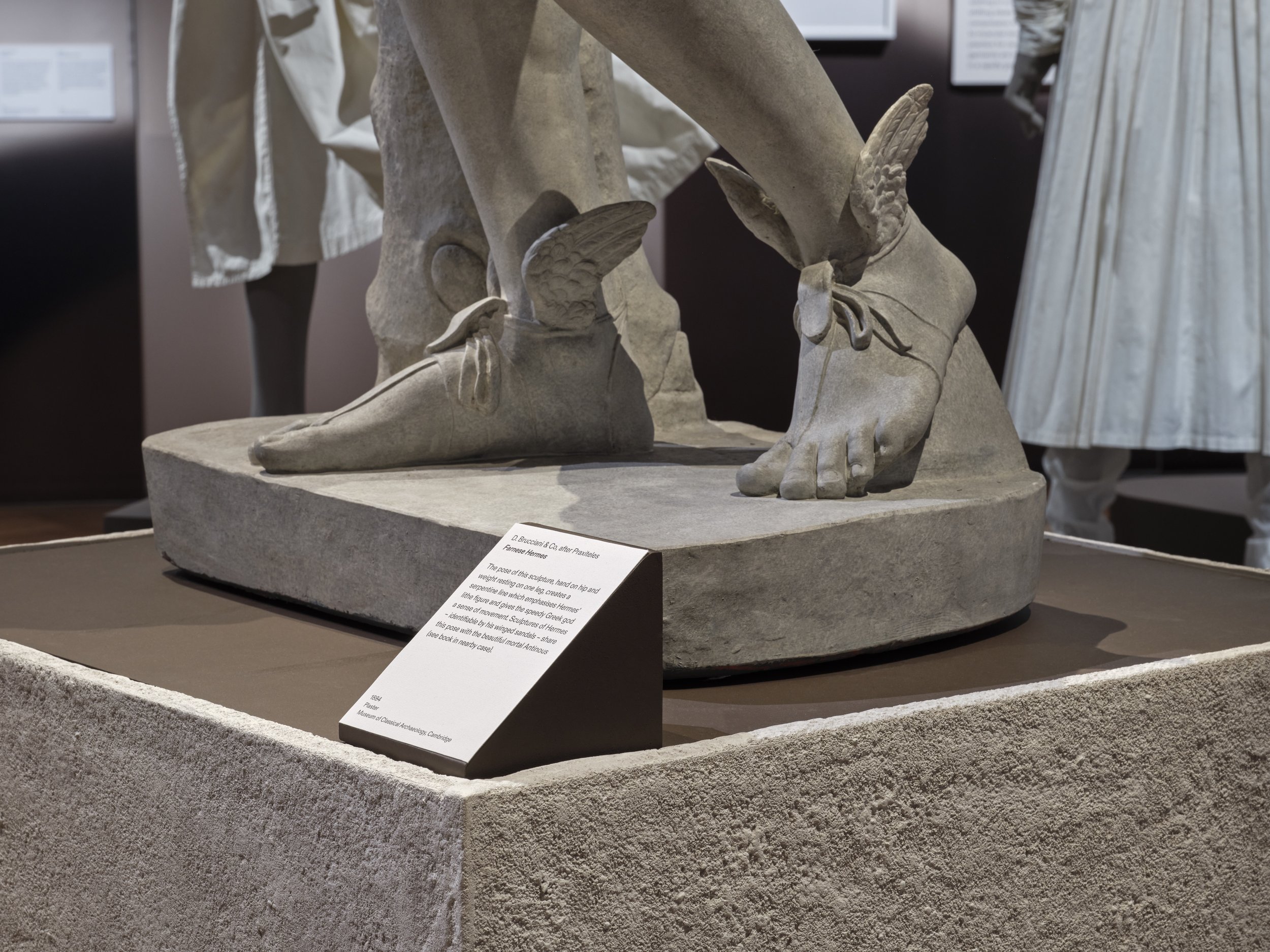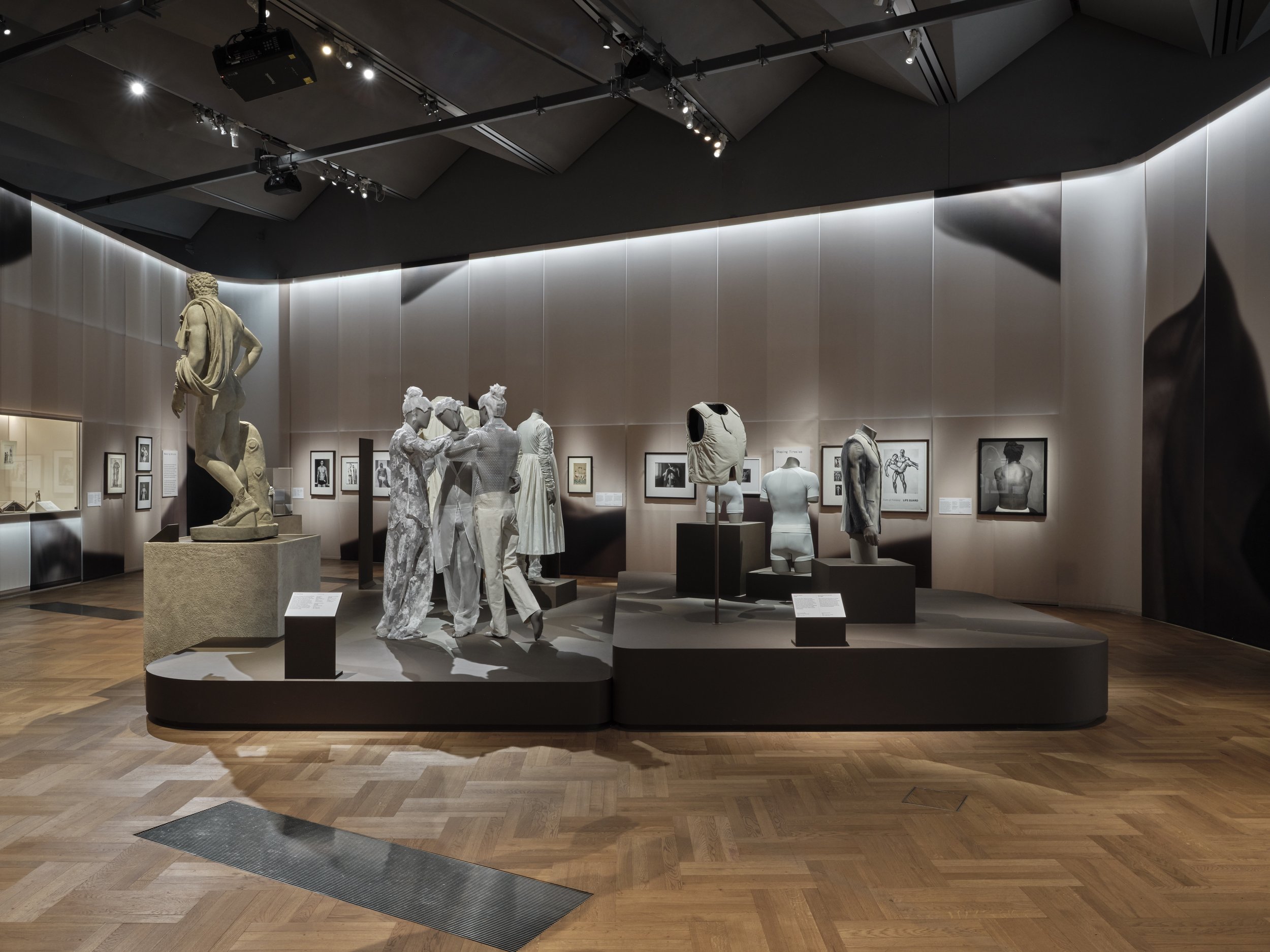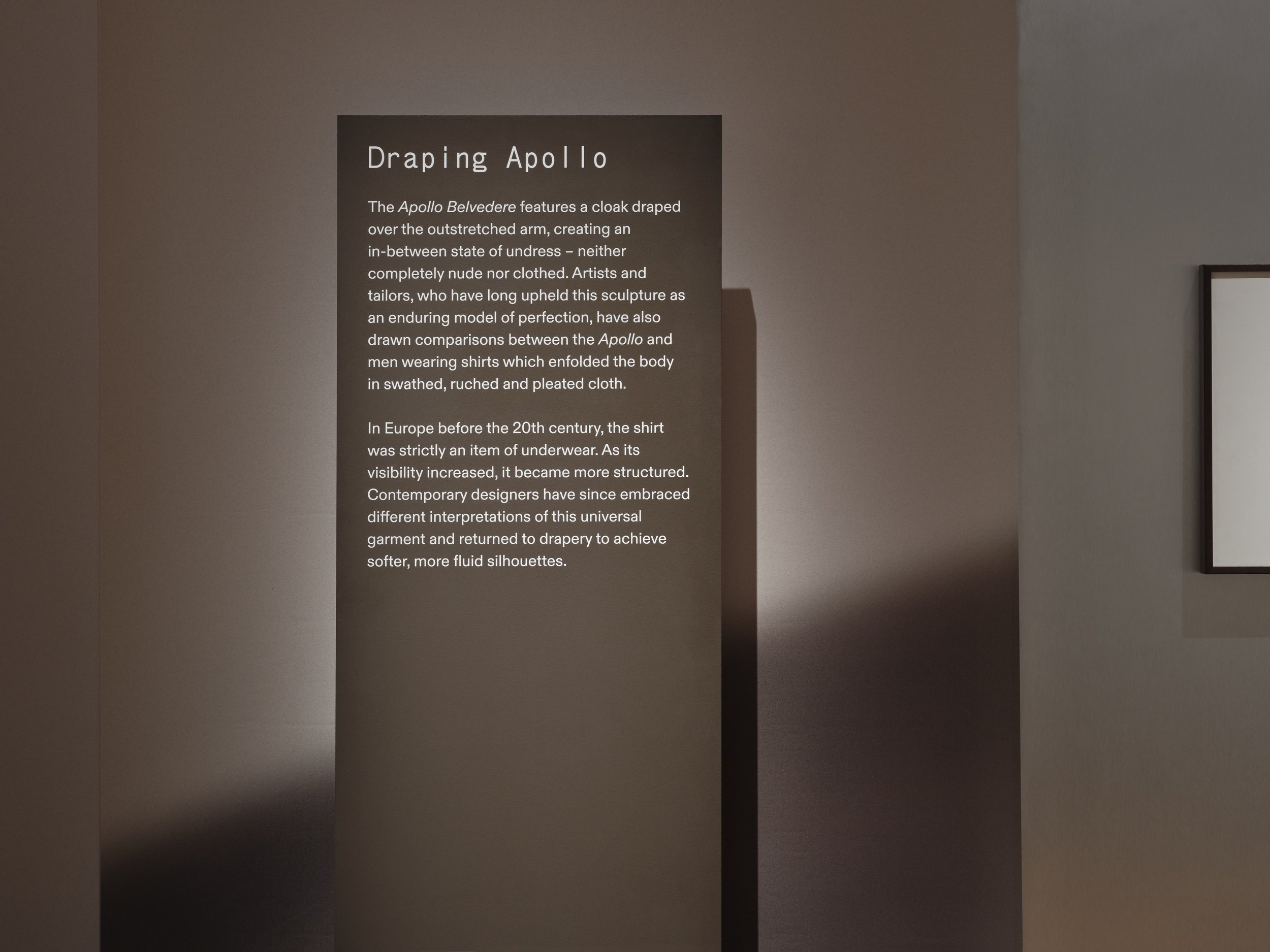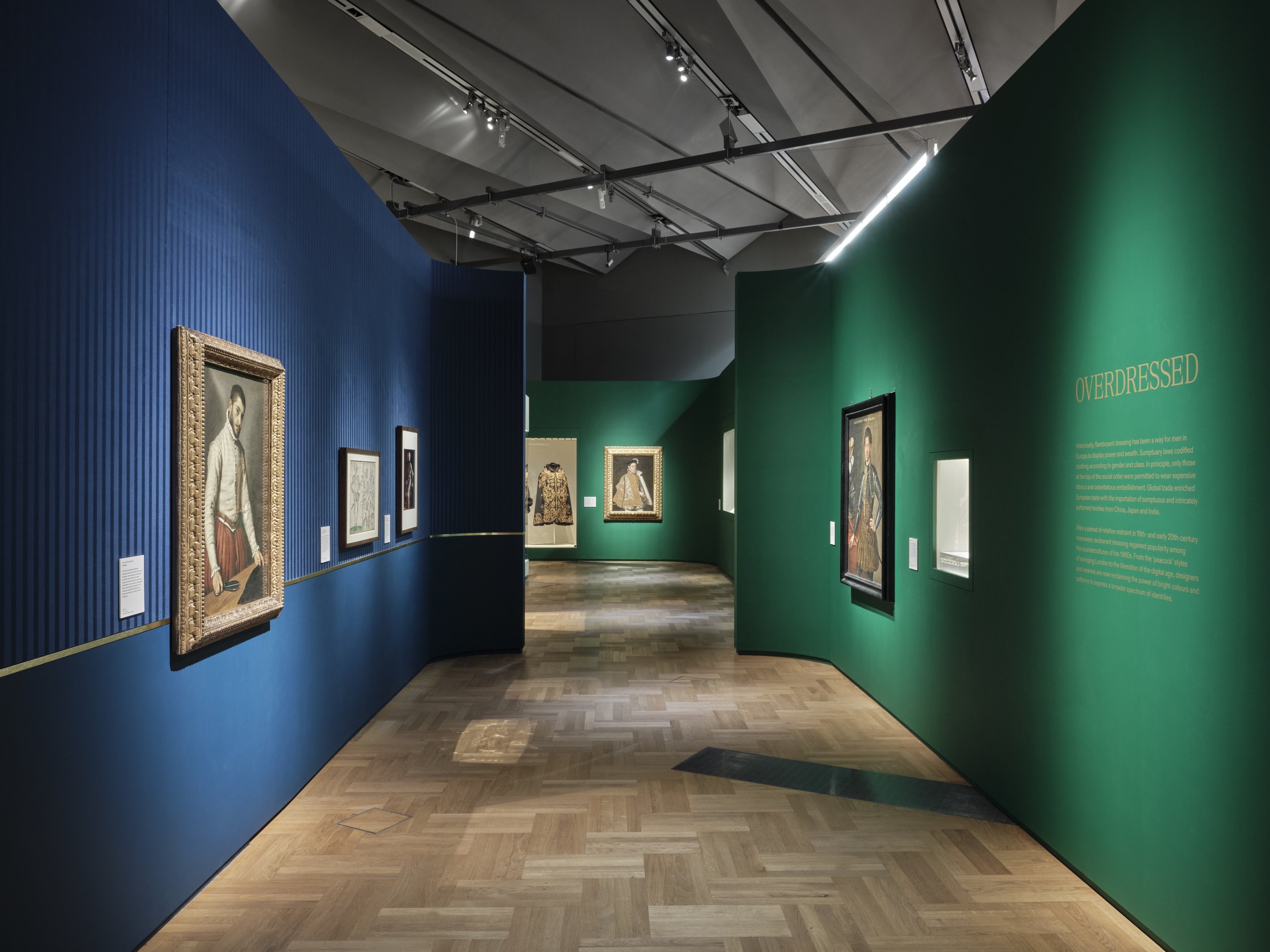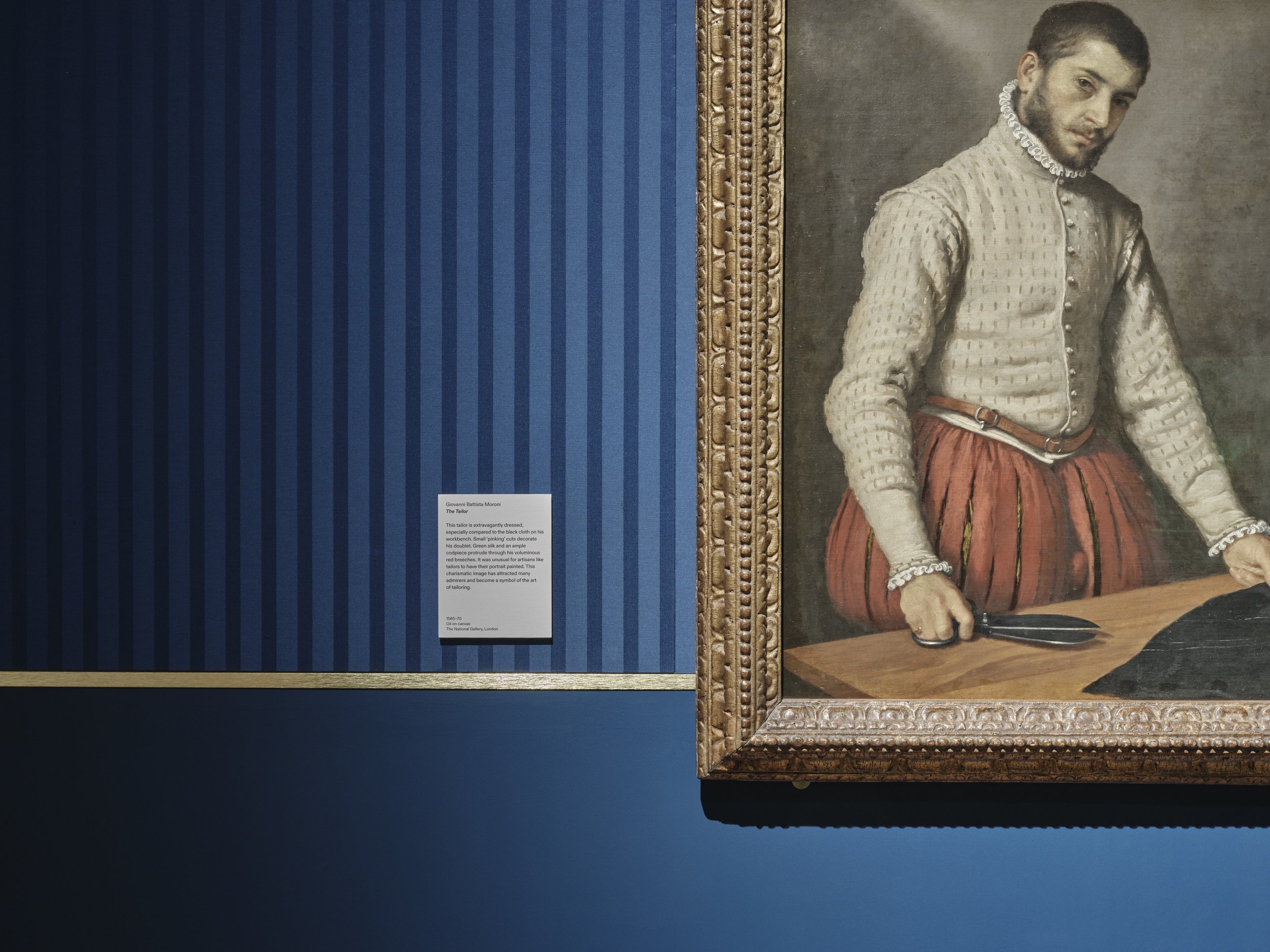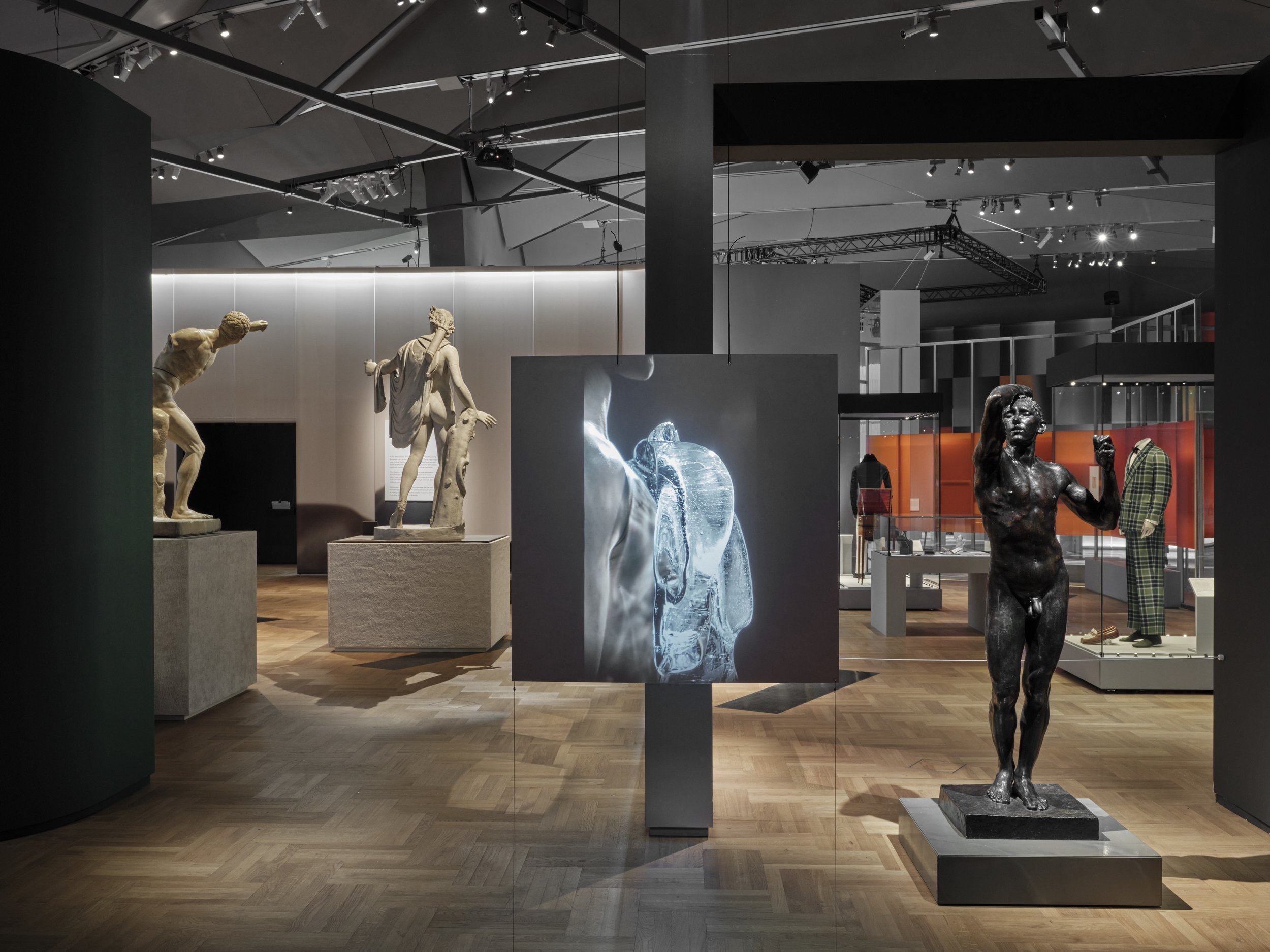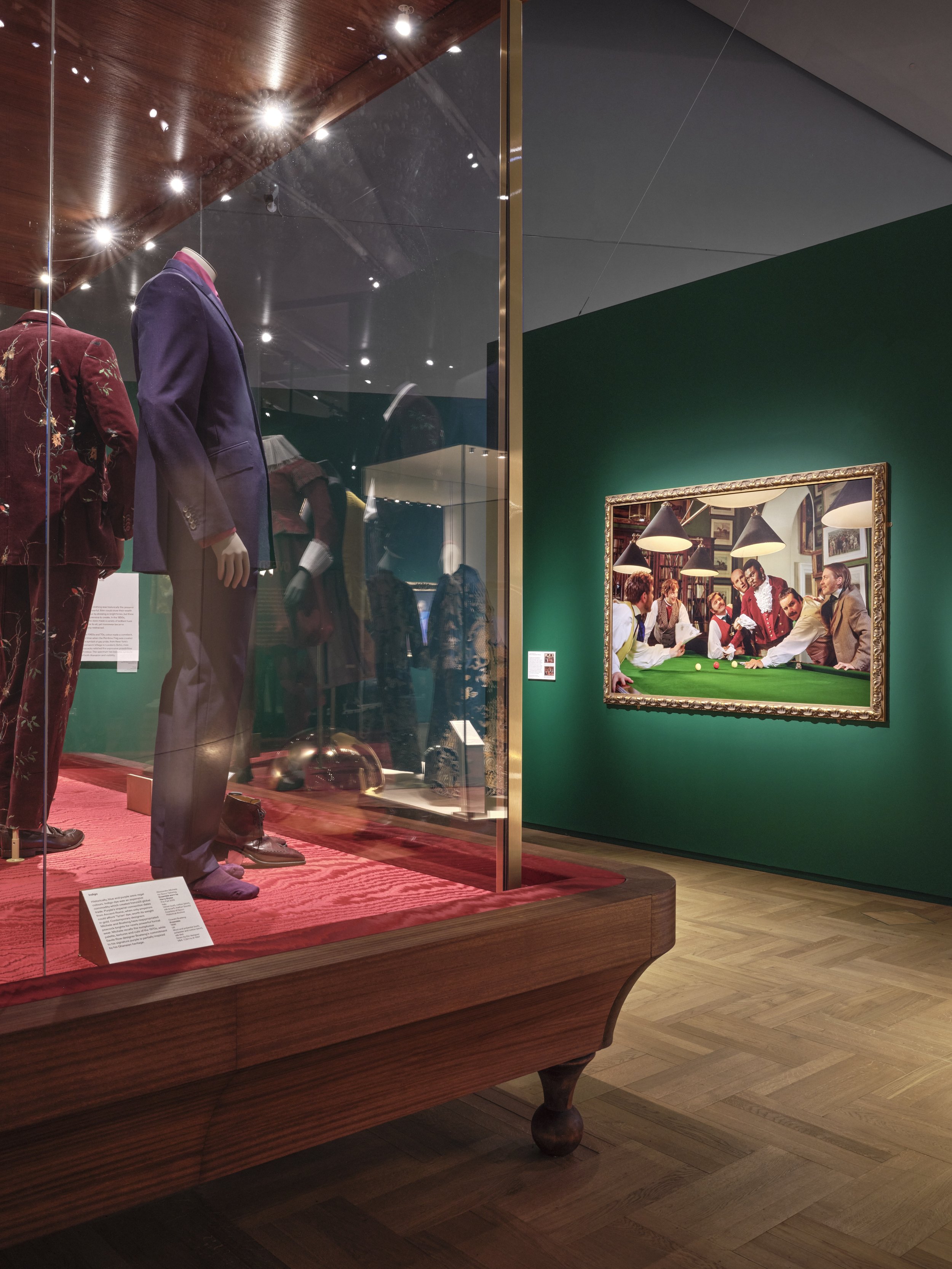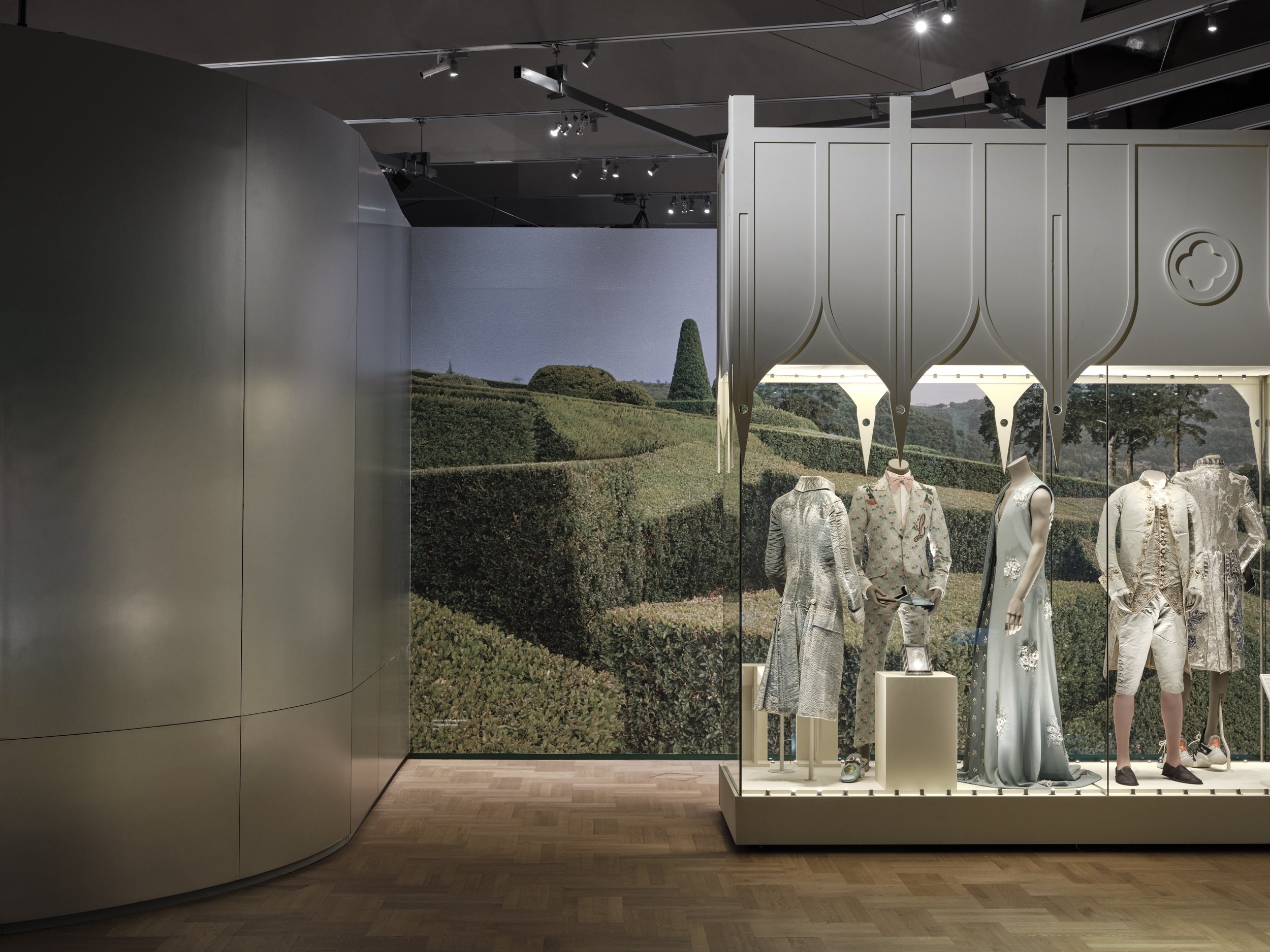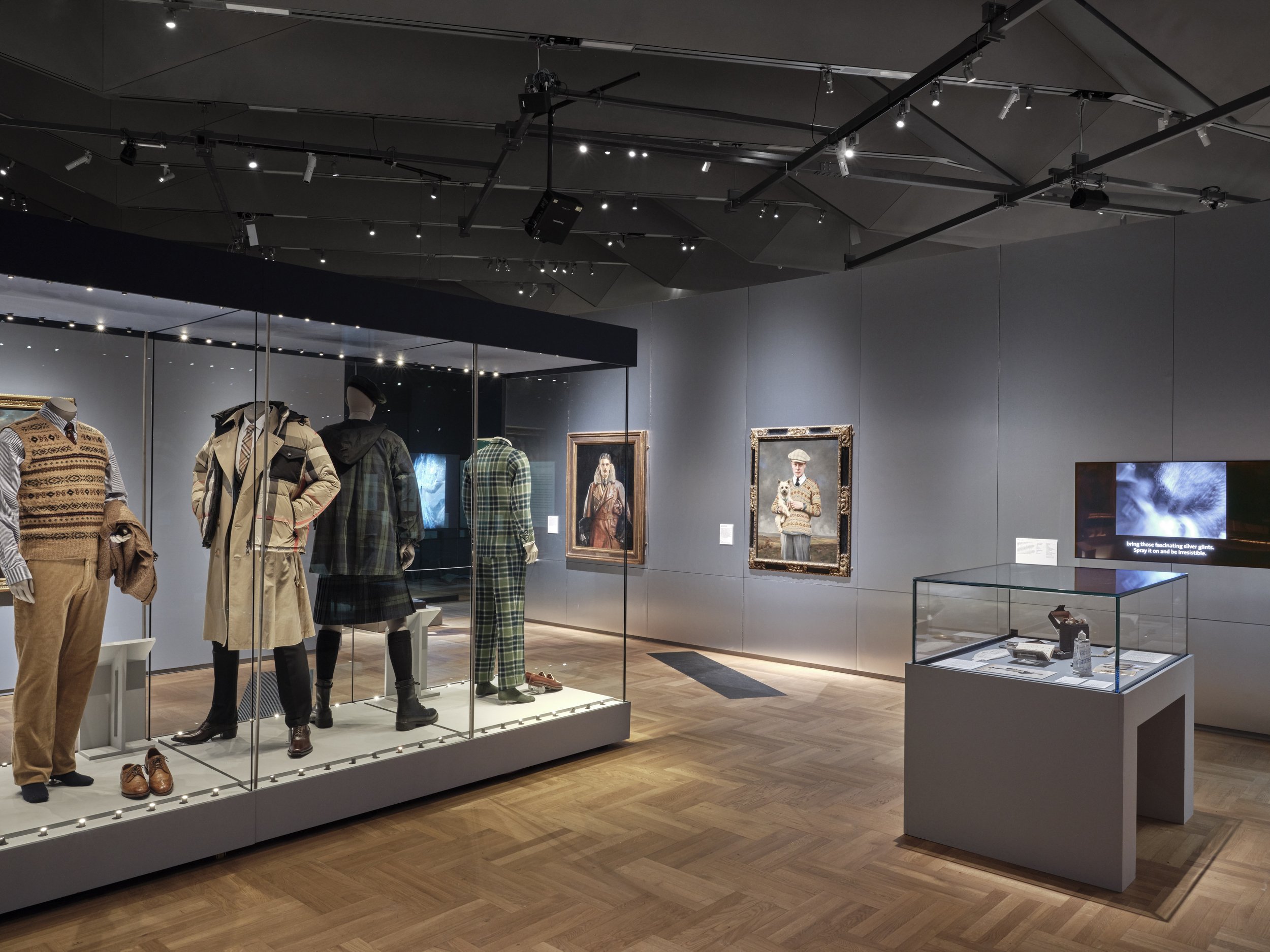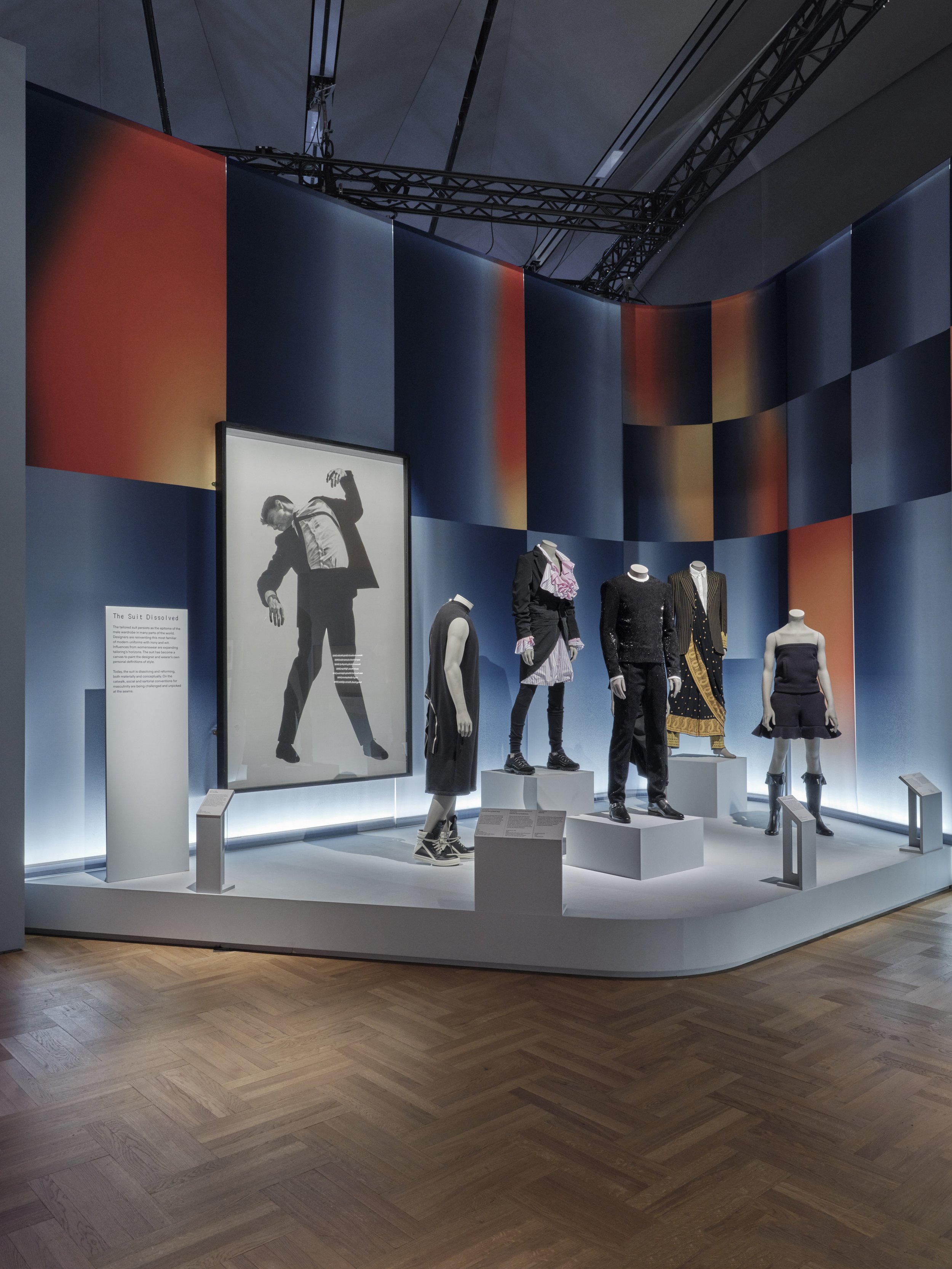Fashioning Masculinities: The Art of Menswear
Victoria & Albert Museum
Date: 2022
A landmark exhibition that takes visitors on a journey from historical to contemporary, exploring gender, identity and adornment.
Photos: Thomas Adank
Fashioning Masculinities: The Art of Menswear traces how menswear has been fashioned and refashioned over the centuries, and how designers, tailors and artists – and their clients and sitters – have constructed and performed masculinity, and unpicked it at the seams. Curated by Claire Wilcox and Rosalind McKever, the exhibition features around 100 looks and 100 artworks and combines work by iconic designers and rising stars of fashion, with historical pieces from the V&A collection and beyond.
Commissioned to develop the creative concept for this landmark show, the architectural studio JA Projects chose to use the platform as an opportunity not only to chronicle the rich history of men's fashion, but to explore the shifting social contexts that have both defined – and been defined by – masculine attire over the centuries. Through juxtapositions, material choices, colours, shapes, lighting and physical perspectives, and even typography, the exhibition teases out the values fashion can represent, the power structures it reinforces or undermines, and the statements it can make about racial, bodily and gender identities.
Installation views of Undressed
Photos: Thomas Adank
‘From Piazza to Pizzazz’
JA Projects’ spatial design breaks the exhibition into three parts, taking visitors on a journey broadly from the ancient past to the present day – ‘from Piazza to Pizzazz’, as the practice describes it.
Undressed
The first section, Undressed, focuses on the male body and how classical antiquity has influenced European ideals of masculinity. Entering the airy space, the visitor is surrounded by monumental sculptural forms that evoke classical proportions and ideals. Bathed in light, gods and heroes are surrounded by draped fabrics that challenge euro-centric ideas of masculine beauty through an oversized and abstracted depiction of Black bodies.
Installation views of Overdressed
Photos: Thomas Adank
Overdressed
From here, visitors journey on to Overdressed – a theatrical series of four rooms reminiscent of a grand country house, celebrating the luxury and flamboyance of menswear as a signifier of power, wealth and individuality. Moving from armoury and dressing room, to billiard room and country garden, visitors are made to feel like guests at a grand party, mixing and mingling with extravagantly dressed fellow guests. The space is defined by theatricality, a melange of rich colours, plush materials and a playful approach to scale.
To create the colour and material palette for this section, JA Projects draws on Yinka Shonibare CBE’s photograph Diary of a Victorian Dandy: 17.00 hours, depicting the artist, a Black man with a physical disability, using the fashions and conventions of 19th-century high society as a pathway to empowerment. The work features prominently in the gallery, which includes elements such as a 10ft billiard table that references Yinka’s red livery in the image.
In this way, the space subtly supports the challenge of establishment power, a sentiment complemented by a soundscape of West African Highlife music, which both complements and contrasts with the stately home setting, while framing narratives from the global south found in the clothes of the contemporary designers exhibited.
Installation views of Redressed
Photos: Thomas Adank
Redressed
The third part of the exhibition, Redressed, introduces the visitor to the city, a landscape defined by mass production and the rhythmic repetition of the factory. The fabric curtain walls that characterised Undressed are reinterpreted here to evoke the hard lines of urban architecture, and in particular the vast planes of glass that define the modern-day city the world over. Where Undressed had solid stone podiums, Redressed has translucent, glass plinths – conveying the story of modern industrial processes that transform raw materials into the building blocks of the metropolis
In the final moment of the exhibition, the visitor themselves becomes part of the exhibit, as they enter a room that is half mirror, half video artwork by Quentin Jones with Cadence Films, and are engulfed within a multiplicity of contemporary fashions, interpretations and expressions of gender and identity.
Installation view, finale of Fashioning Masculinities at V&A (c) Victoria and Albert Museum, London
Fashioning the show
While JA Projects took charge of the overall shape of the show, Studio ZNA enriched the creative concept with considered lighting design that highlights the garments and artworks featured while thematically underscoring each section.
Graphic design was provided by Studio Hugo Blanzat, which has developed a bespoke typeface that evolves with the visitor journey – from the relative clarity and simplicity of Undressed, to the unpredictable exuberance of Overdressed, to the rationality-turned-rebellion of Redressed.
The result is an immersive, engaging and richly sensory exhibition that marries spectacle with social commentary, and which encourages visitors to unpick the values stitched into the seams of men’s clothing through the ages.
“We're delighted to have collaborated with the fantastic team at JA Projects on the exhibition design. They have been open to exploring big themes and ideas throughout the development, and worked on conscientious design strategies to reduce the material footprint for scenography. The resulting design is light and contemporary with an intelligent use of tone, image, texture and material, that creates a spatial equivalent and counterbalance to the curatorial ideas on show adding up to an overarching experience for visitors that is really successful.”
– Evonne Mackenzie, Head of Design at the V&A



